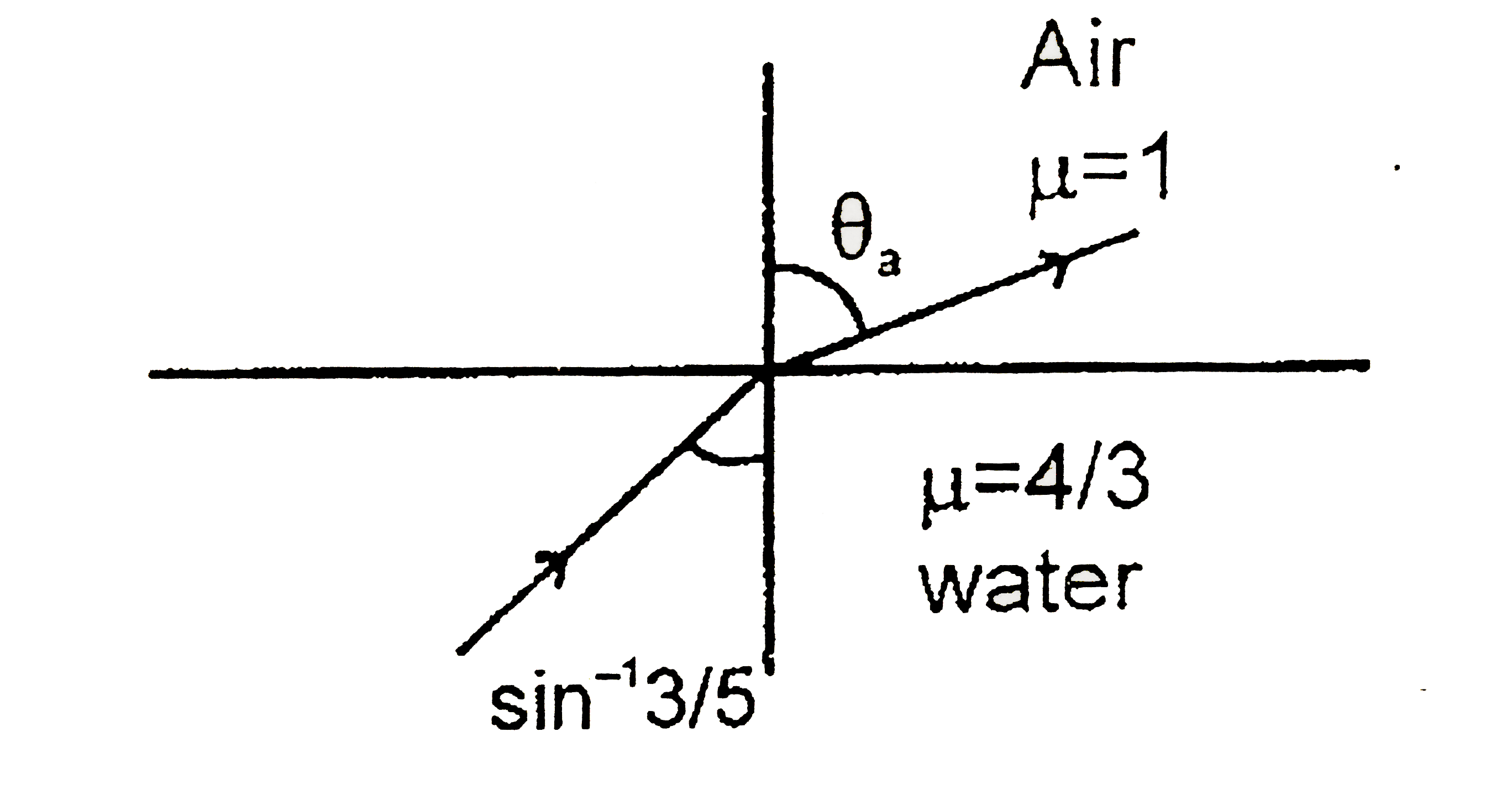
Wavefronts are incident on an interface at an angle of 30∘ as shown. Find the angle of the refracted wavefronts.
30∘
45∘
60∘
75∘
The correct Answer is:B
μ1sin30∘=μ2sinr
⇒√2(12)=(1)sinr
⇒sinr=1√2⇒r=45∘
Topper's Solved these Questions
- WAVE OPTICSBOOK - MTG-WBJEECHAPTER - WAVE OPTICSEXERCISE - WB JEE PREVIOUS YEARS QUESTION (MCQ.s)
9 Videos
- THERMODYNAMICSBOOK - MTG-WBJEECHAPTER - THERMODYNAMICSEXERCISE - WB JEE Previous Years Questions
12 Videos
- WORK, POWER, ENERGYBOOK - MTG-WBJEECHAPTER - WORK, POWER, ENERGYEXERCISE - EXERCISE (WB JEE Previous Years Questions) CATEGORY 1 : Single Option Correct Type (1 Mark)
3 Videos
Similar Questions
A plane wavefront incident on a reflecting surface at an angle of 30∘ with horizontal. Find the angle of reflected wavefront with horizontal
View SolutionA plane wavefront incident on a reflecting surface at an angle of 30∘ with horizontal. Find the angle of reflected wavefront with horizontal
View Solution
Knowledge Check
_E01_076_Q01.png)
Huygen was the figure scientist who proposed the idea of wave theory of light he said that the light propagates in form of wavelengths. A wavefront is a imaginary surface of every point of which waves are in the same. phase.
For example the wavefront for a point source of light is collection of concentric spheres which have centre at the origin w1 is a wavefront w2 is another wavefront.
The radius of the wavefront at time 't' is 'ct' in thic case where 'c' is the speed of light the direction of propagation of light is perpendicular to the surface of the wavelength. the wavefronts are plane wavefronts in case of a parallel beam of light.
_E01_076_Q02.png)
Huygen also said that every point of the wavefront acts as the source of secondary wavelets. The tangent drawn to all secondary wavelets at a time is the new wavefront at that time. The wavelets are to be considered only in the forward direction (i.e., the direction of propagation of light) and not in the reverse direction if a wavefront w1 and draw spheres of radius 'cΔt' they are called secondary wavelets.
Draw a surface w2 which is tangential to all these secondary wavelets w2 is the wavefront at time t+Δt Huygen proved the laws of reflection and laws of refraction using concept of wavefront.
Q._E01_076_Q03.png)
Wavefronts incident on an interface between the media are shown in the figure. the refracted wavefront will be as shown inA_E01_076_O01.png) B
B_E01_076_O02.png) C
C_E01_076_O03.png) D
D_E01_076_O04.png)
_E01_076_Q01.png)
Huygen was the figure scientist who proposed the idea of wave theory of light he said that the light propagates in form of wavelengths. A wavefront is a imaginary surface of every point of which waves are in the same. phase.
For example the wavefront for a point source of light is collection of concentric spheres which have centre at the origin w1 is a wavefront w2 is another wavefront.
The radius of the wavefront at time 't' is 'ct' in thic case where 'c' is the speed of light the direction of propagation of light is perpendicular to the surface of the wavelength. the wavefronts are plane wavefronts in case of a parallel beam of light.
_E01_076_Q02.png)
Huygen also said that every point of the wavefront acts as the source of secondary wavelets. The tangent drawn to all secondary wavelets at a time is the new wavefront at that time. The wavelets are to be considered only in the forward direction (i.e., the direction of propagation of light) and not in the reverse direction if a wavefront w1 and draw spheres of radius 'cΔt' they are called secondary wavelets.
Draw a surface w2 which is tangential to all these secondary wavelets w2 is the wavefront at time t+Δt Huygen proved the laws of reflection and laws of refraction using concept of wavefront.
Q._E01_076_Q03.png)
Wavefronts incident on an interface between the media are shown in the figure. the refracted wavefront will be as shown in
View SolutionA plane surface separates a denser medium of refractive index 1.5 from air. A plane wavefront travelling in air is incident on the interface at an angle of 30∘. What will be the angle of refraction ?
View SolutionA plane wavefront incident on a reflecting surface at and angle of 30∘ with vertical. Find the angle (acute) of reflected wave with vertical.
View SolutionA plane wavefront incident on a reflecting surface at and angle of 30∘ with vertical. Find the angle (acute) of reflected wave with vertical.
View SolutionA plane wavefront is incident on a plane reflecting surface at an angle of 30∘. What angle will the reflected rays make with the reflecting surface ?
View SolutionIf sky wave with a frequency of 60 MHz is incident on D- region at an angle of 30∘, then find the angle of refractive.
View SolutionA light ray is incident on a glass sphere at an angle of incidence 60∘ as shown. Find the angles r,f1,e and the total deviation after two refractions.

View Solution
